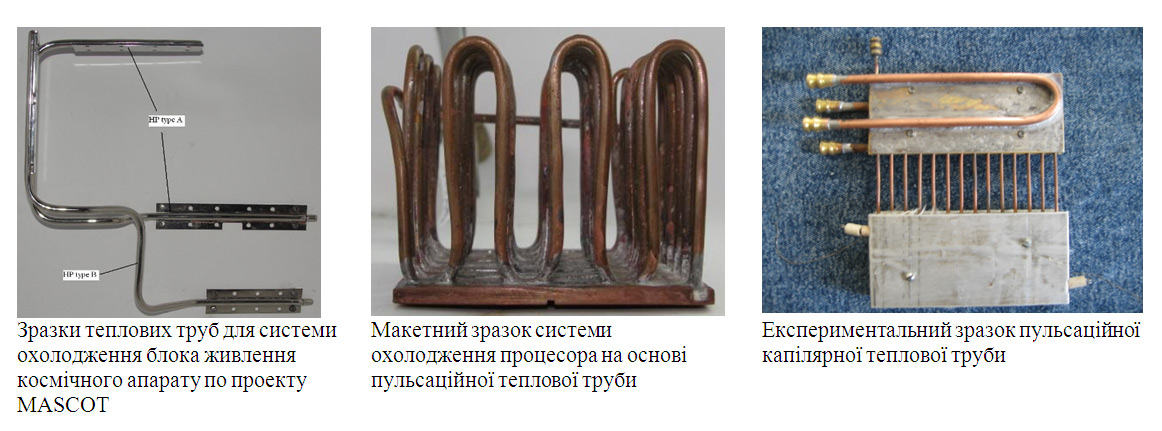The processes of vapor generating in closed miniature evaporation-condensation systems with new coolants for space purposes
A complex study of heat transfer processes in constrained conditions in evaporative-condensation systems was carried out for the first time. A physical model of the boiling process on porous surfaces in conditions of limited space was developed and presented. Dependencies for calculating the heat transfer intensity under such conditions have been obtained. Such dependencies are necessary to create miniature cooling systems for microchips and powerful processors of electronic equipment. The mechanism of pulsation phenomena in miniature thermosyphons was disclosed, and dependencies for calculation of the amplitude and period of temperature pulsations in the heating zone were obtained. The influence of regime and geometric factors on the range of occurrence of such temperature pulsations was revealed.
The study of the heat transfer intensity in the heating and condensation zones in miniature evaporative-condensation systems with various heat carriers has shown ways of improving the heat transfer capabilities of miniature heat pipes, thermosyphons and pulsation heat pipes. The nature of the influence of the main factors on heat transfer processes was revealed. New dependencies for calculating the heat transfer characteristics (heat transfer intensity, thermal resistance and maximum heat flux) of miniature evaporative-condensation systems have been obtained and recommendations for the further application of such devices in power equipment of both terrestrial and space applications have been developed. Based on the research results, operating samples of cooling systems with characteristics exceeding the best foreign counterparts have been developed and manufactured. Criteria dependencies for calculating the intensity of heat transfer processes in heat input zones of miniature heat pipes and thermosyphons were determined. The methods for calculating the heat transfer characteristics of miniature heat pipes, thermosyphons and capillary pulsation heat pipes were presented. These methods allow to create modern cooling systems with high heat transfer characteristics.

| Attachment | Size |
|---|---|
| 131.76 KB |




